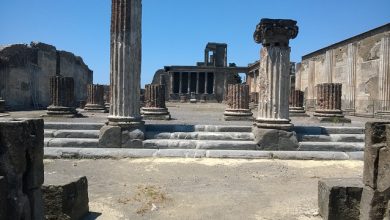Worst floods in history

Heavy rains, rivers overflowing banks, and other natural disasters can all lead to flooding. In other instances, people are caught off guard by flooding and do not have enough time to leave before it is too late, which results in deaths.
Several floods throughout human history were so devastating that they claimed the lives of large numbers or even hundreds of thousands of people.
All Saints’ Flood (1570)
Both floods, known as the Flood of All Saints, took place in what is now known as the Netherlands. The first of these floods occurred in 1170, while the second occurred in 1570. The second earthquake, which occurred on November 1, 1570, was significantly more destructive than the first. It struck the coast of the Netherlands and had a major impact on the cities of Egmond, Bergen-op-Zoom, and Saeftinghe. The dams were breached because of the persistent storm that had been going on for quite some time and had caused the water level to rise to a significant height. In addition, because the shoreline of the Netherlands is below sea level, the water had no problems passing through the country without being stopped.
Although historical archives do not provide exact numbers, it is estimated that approximately 20,000 people were killed. Tens of thousands more people lost their homes, and many of them starved to death as a result of the destruction of their crops and cattle.
Saint Marcellus’s flood(1219 and 1362)
The other two separate floods with the same names are separated by more than half a century. The first Flood of St. Marcellus occurred on January 16, 1219, and occurred in the territory of West Friesland and the province of Groningen. The tidal wave, coming from the North Sea, destroyed everything in its path, including towns, resulting in the death of about 36,000 people.
The second flood of St. Marcellus occurred on the same day, but already in 1362, and this time it came on the coast of England. As a result, 25,000 people died, and many towns in the British Isles were destroyed.
Yellow River flood (1938)
In 1938, war raged between Japan and Nationalist China, and Imperial Army troops rushed into the center of Chinese territory. Having captured an important railroad junction, the Japanese threatened to encircle the cities of Wuhan and Xi’an. Finding no other solution, Chiang Kai-shek, leader of Nationalist China, ordered the dams on the Huang He near Zhengzhou to be opened, which was supposed to stop the Imperial Army.
The plan did not go according to plan, however, and the water poured into a huge torrent, destroying thousands of villages in its path. After the end of World War II, experts from Nationalist China gave the number of dead on the order of 500-800 thousand people, but it is believed that this figure was an underestimate.
Yellow River flood (1887)
The Yellow River, this time at the end of the nineteenth century. Even though this River’s many dams enable it to overflow its banks frequently, the River can keep its power under control, at least to the extent that the number of people affected by flooding is kept to a minimum.
However, in September of 1887, heavy torrential rains caused the Huang He to rise above the levees, which caused them to break. The yellow River then collapsed across tens of thousands of square kilometers, taking the lives of at least 900,000 people and, according to other estimates, up to 2 million people.
Yangtze River Flood (1935)
The Yangtze River is responsible for up to 75 percent of all floods that occur in China. Throughout China’s history, this River has been the source of widespread concern among the local population, and in 1935, one of the worst floods on record happened.
The country had been experiencing a drought for the previous three years, so the residents initially greeted the rains that fell on the region with joy. However, their joy quickly turned to disappointment. But the euphoria was short-lived because not long after, the Yangtze river overflowed its banks and quickly swamped the surrounding villages, washing away part of them and the people who lived in them. As a direct consequence of this, 145,000 people lost their lives as a direct result of the flood, and tens of thousands more lost their lives as a direct result of starvation.
St. Lucia’s Flood (1287)
On December 14, 1287, a violent storm hit the coast where the Netherlands and Germany are located today, bringing tidal waters that overflowed the land in the surrounding area. This storm was responsible for the destruction of both countries. Because of the severity of the flooding, Lake Zeiderzee, located deep within the continent, was transformed into a bay of the North Sea. The lake did not reemerge as a distinct body of water until 1932, when the Afsluitdijk dam was built.
The devastation was so terrible that Amsterdam, located inland, was transformed into a coastline city; dozens of villages were swept away into the water, and the total number of victims approached 50,000. Additionally, tens of thousands of people were forced to abandon their houses and move to higher ground.
China floods (1931)
The winter of 1930-1931 was snowy for South Central China. In the spring, however, heavy rains came. The melting snow, combined with precipitation, began to overflow the rivers. Long summer showers added to this.
In July 1931, the Yangtze, Huai, and yellow Rivers came out of their banks one after another. They flooded vast areas, destroying levees along the way and further aggravating the situation. On August 25 alone, some 200,000 people were killed when the water caught them in their beds. In all, up to 4 million people died from the flood and the famine and disease that followed.
Red River Delta Flood (1971)
Like many countries in the South Asian region, Vietnam has two seasons – hot and rainy. In the latter, heavy rains can fall from May to September almost non-stop, causing regular floods.
For this reason, thousands of years ago, the Vietnamese built many dams to protect cities, including Hanoi, the capital of Vietnam, from floods. During the Vietnam War, however, the opposing sides had slightly different concerns than keeping the dams in good condition. The situation was exacerbated by the uncontrolled bombing of everything and every one by American troops. As a result, on August 1, 1971, because of the overflow of the dams and their deplorable state, the water broke its banks, and a massive flood began, which affected the territory of North Vietnam and killed at least 100,000 people.
Bangladesh Flood (1971)
Bangladesh, which appeared on the world map only in 1971, had to face a serious trial three years after gaining independence. In the summer of 1974, the prolonged heavy rains caused the death of about 30 thousand people. But that was only the beginning.
The problem was that heavy rains and flooding destroyed about 80 percent of the summer crop and the same amount of crops for the winter crop. As a result, a massive famine gripped the country, killing about 1.5 million people between 1974 and 1975.
The collapse of the Banqiao Dam (1975)
The Ru River’s Banqiao Dam was designed to withstand even the most severe flooding, which can occur when more than 300 millimeters of rain falls in a single day. However, the rainfall totaled more than 1,500 millimeters per day due to the record storms and the typhoon that struck in August 1975. This resulted in the dam being overrun by a volume of water that was many times its capacity. The sluice gates could not withstand the amount of water flowing through them; thus, they broke.
The floods resulted in a wave 10 kilometers wide and between 3 and 7 meters high, which caused thousands of square kilometers to be flooded. According to official calculations, the flood was solely responsible for the deaths of over 26,000 people. After some time, due to the illnesses and famine that started, this figure eventually reached 171,000, and according to other estimates, it even reached 230,000 people.




